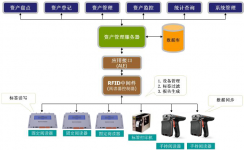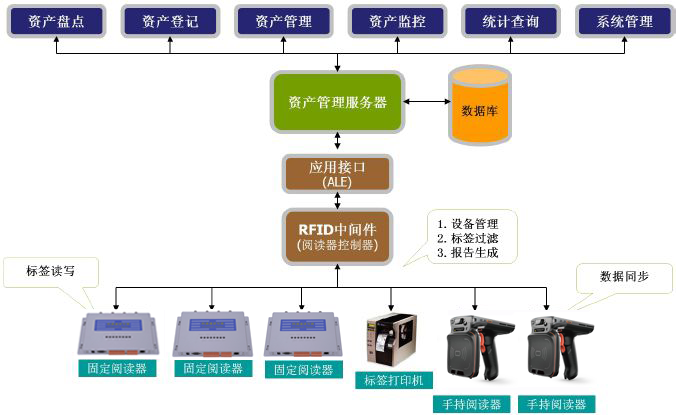
RFID technology visualizes fixed asset management information
[ad_1]
Fixed asset management is an important part of enterprise management and it is of great significance. Fixed assets generally have many characteristics such as large quantity, variety, high value, long service life, scattered use locations, etc., so the difficulty of management can be imagined and more difficult. The application of RFID technology realizes the “simultaneous management of people, place, time and things” in asset management, and will realize the recording of tasks, locations, objects, time and other information involved in the daily operation of assets, and effectively supervise them. It reduces the pressure of daily asset management, saves a lot of manpower and time costs, and improves corporate management efficiency. RFID technology allows visualization of fixed asset management information.
The application of RFID technology ensures the safety of valuable materials, the stability of enterprise development and the protection of self-interests; it improves the modernization level of enterprise’s valuable asset management and reduces the intensity of safety management; conducts anti-theft and safety management of assets to prevent The occurrence of loss or leaks; real-time positioning, tracking, and automatic inventory of valuable assets, making asset management automated and intelligent; liberating manual labor, saving management costs, and greatly improving the management level;

The RFID asset management system better solves the problem of information management. The active identification and active positioning functions of RFID have improved management efficiency and realized asset information management.
Advantages of RFID asset management system:
1. Environmental safety
The radio frequency RFID reader/writer itself only accepts signals and does not send out any signals, and the influence of radio frequency signals generated by radio frequency tags on the human body is in full compliance with the national electromagnetic radiation protection regulations (GB9175-88 GB8702-88).
2. High reliability
Stability and reliability are the biggest challenges. Frequent false alarms and false alarms are never allowed.
3. Accurate collection
We have solved the problems of long distance, large flow, and ultra-low power consumption, and fundamentally improved the performance of the product. This ensures that the system can effectively reduce the collision rate of radio frequency positioning signals in the air in the case of high-density positioning of radio frequency tags, and greatly reduces the probability of radio frequency signal reception loss.
4. Highly compatible
The system is compatible with mainstream video interfaces. When an alarm occurs, the on-site video surveillance images can be immediately accessed to help managers analyze the scene of the incident, allowing them to make correct judgments on the alarm more intuitively.
5. Convenient maintenance
The system provides automatic maintenance functions for electronic tags and positioning equipment, and fault detection functions for radio frequency RFID readers, which greatly reduces the maintenance cost of the system.
The application of RFID technology to asset management effectively optimizes many processes of enterprise management and control. RFID technology performs equipment arrival inspection, responsible purchase, time of in and out of warehouse and responsible person in charge, asset use right information update and use history query, as well as asset allocation, fault repair, equipment inventory location, asset calculation report and Its financial accounting and other operational data are automatically collected and recorded accurately, which greatly ensures the accuracy of the data and effectively avoids the loss of fixed assets of the enterprise. RFID technology implements visualization and information management of enterprise fixed assets, making asset management more refined and life cycle maintenance. Through the RFID asset management system to ensure the best use and safe flow of tangible assets, so as to create an advanced, standardized and optimized management platform.
[ad_2]




